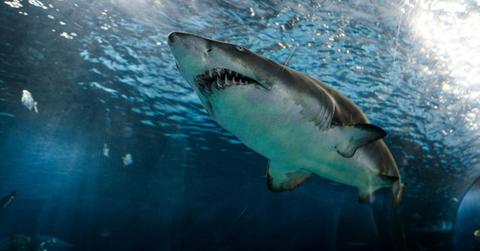Prehistoric Predator: Ancient 30-Foot Relative of Great White Shark Discovered in Mexican Quarry

A suspected 13-foot shark reportedly attacked a local man in Australia after whale carcass discovered on beachfront, officials said.
Fossilized remains of an enormous shark that coexisted with the dinosaurs have unveiled crucial insights about this mysterious predator, revealing it to be an ancient relative of the great white shark.
Sharks from the genus Ptychodus were initially discovered in the mid-eighteenth century. Most descriptions of this genus were primarily based on their teeth, which could reach nearly 22 inches in length and 18 inches in width, specially adapted for crushing shells.
These teeth were found in numerous marine deposits dating back to the Cretaceous period (from 145 million to 66 million years ago).
Until now, without the ability to examine a fully intact specimen, researchers had engaged in heated debates about the body shape of this shark.
"The discovery of complete Ptychodus specimens is really exciting because it solves one of the most striking enigmas in vertebrate paleontology," lead author Romain Vullo, a researcher at Géosciences Rennes, explained in an email to Live Science.
In a study published recently in the journal Proceedings of the Royal Society B: Biological Sciences, researchers detailed complete fossils of the shark discovered in limestone quarries in Nuevo León, northeastern Mexico.
Its outline was remarkably well-preserved, and its body shape suggests it preyed on sea turtles — which might explain its extinction around 76 million years ago as it competed with other animals that also fed on the same prey.
“The specimens “show an exquisite preservation," because they were deposited in a quiet area with no scavengers, Vullo said. “The carcasses of animals were rapidly buried in soft lime mud before being entirely disarticulated."
- What Lies Beneath: NASA Scientist Believes Aliens May Have Found 'Perfect' Hiding Spot in Earth's Oceans
- Global Threat: Russia Insider Warns West of 'World War Using Nuclear Weapons' Amid Escalating Support for Ukraine
- Countdown to Disaster? Ex-NATO Official Warns Russia, Iran and China Could Wage WWIII in Just Years
Analysis of the fossils reveals that this large predator belonged to the mackerel shark group (Lamniformes), which includes great whites (Carcharodon carcharias), mako and salmon sharks.
It grew to around 33 feet long and is known for its massive, grinding teeth, unlike those seen in sharks today.
It was widely believed that Ptychodus fed on invertebrates from the seabed — the ancient relatives of clams and mussels. However, the new fossils challenge that belief, revealing that this ancient shark had a streamlined body shape, indicating it was a fast-swimming pelagic predator.
Never miss a story — sign up for the Front Page Detectives newsletter. Be on the scene the moment news breaks.
"The newly discovered fossils from Mexico indicate that Ptychodus looked like the living porbeagle shark," Vullo said, but with “unique grinding dentition."
This newfound information has led the researchers to believe it preyed on large ammonites — a type of crustacean with a hard shell — and sea turtles.
"Ptychodus occupied a special ecological niche in Late Cretaceous seas," Vullo said, because it was the only pelagic shark adapted to eating hard-shelled prey such as turtles. This may explain why it died out around 10 million years before the extinction event that ended the Cretaceous period.
“Toward the end of the Cretaceous, these large sharks were likely in direct competition with some marine reptiles (mosasaurs) targeting the same prey," he said.
Become a Front Page Detective
Sign up to receive breaking
Front Page Detectives
news and exclusive investigations.
